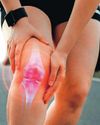
Dr Sunil Sanghi, 57, senior consultant, dermatology, studied medicine at the Armed Forces Medical College in Pune. A fellow of the American Association of Dermatology, he enjoys playing lawn tennis and table tennis.
BEYOND ‘JUST’ SKIN: The condition of our skin is indicative of overall health. Thus skin which is yellow, blotchy or sallow is indicative of trouble elsewhere. Many diseases like hepatitis first manifest as itching or rashes on the skin. The quest for beauty has shone an even more intense spotlight on it.
THE LOOK OF HEALTH: A healthy skin reflects a healthy body. Such skin is smooth, warm, hydrated and has an even tone. There are five primary skin types: oily, dry, normal, combination and sensitive. Each skin type has its own sets of unique characteristics and needs that can affect the look and feel of your complexion. A balance of oil and moisture leads to blemish-free and smooth skin with fine pores. While genes play a major role in skin type, care routine, sunlight, temperature, stress, hormones, smoking, alcohol and exercise also affect it.
SIGNS THAT ALL IS NOT WELL: Flakes, cracks, rashes or visible hair and nail changes.
NORMAL CHANGE: The skin becomes thinner over time. There is loss of volume, especially in the cheeks, and bags form under the eyes. The effects of aging on the face are inevitable. These changes are normal with time. A newborn has delicate skin, teenagers have acne and the elderly have wrinkles. During pregnancy or rapid weight gain or loss, stretch marks can appear, which, despite the marketing hype, will not go. The marks result from the dermis—the middle layer of the skin—being stretched beyond its capacity and a resultant tear in its fibres.
WHAT IS UNACCEPTABLE: Severe acne leading to scars, rapid wrinkling and loss of volume or early progression of baldness.
This story is from the July 07, 2024 edition of THE WEEK India.
Start your 7-day Magzter GOLD free trial to access thousands of curated premium stories, and 9,000+ magazines and newspapers.
Already a subscriber ? Sign In
This story is from the July 07, 2024 edition of THE WEEK India.
Start your 7-day Magzter GOLD free trial to access thousands of curated premium stories, and 9,000+ magazines and newspapers.
Already a subscriber? Sign In

Walking in pine forest can have the same effect as a prescription drug
INTERVIEW - KATHY WILLIS, professor of biodiversity, the University of Oxford, and author, Good Nature

MORE THAN A HELPING HAND
Maria Victoria Juan spent a lifetime healing wounded soldiers, and she can't think of anything she could have done better

Against all odds
Mohamed Raishan Ahmed was born with spinal muscular atrophy, which made him unable to sit, stand or walk. Recently, the Maldivian underwent a rare, complex surgery in India that now allows him to sit upright. At 23, the fact that he is alive is in itself an achievement. But he has gone beyond mere survival-with a pursuit of excellence

A pacemaker tale
From science fiction to reality, with a touch of southern Indian wisdom

Driving safe
Taxi drivers endure gruelling hours, cramped seats and relentless traffic, making them prime candidates for health issues like back pain, hypertension, diabetes and insomnia.

Good food, good life
From the moment of birth, we establish a relationship with food—a nourishing link that requires care and attention to stay healthy

POOR SLEEP IN MIDLIFE COULD AGE YOUR BRAIN FASTER
PEOPLE WHO EXPERIENCE SLEEP ISSUES, such as difficulty falling asleep or staying asleep in their 40s, may show more signs of brain ageing in late midlife. Poor sleep may accelerate brain atrophy that is associated with dementia.

BRAIN SCANS SHOW MINDFULNESS MEDITATION CAN REDUCE PAIN
CAN MINDFULNESS MEDITATION actually relieve pain, or is it just a placebo effect?

NON-SURGICAL OPTION TO EASE KNEE ARTHRITIS
A NEW, MINIMALLY INVASIVE procedure called genicular artery embolisation (GAE) can effectively reduce pain, improve quality of life and reduce progression of the disease and the need for knee replacement surgery in people with knee osteoarthritis.

EARLY ONSET DIABETES, BELLY FAT LINKED TO DEMENTIA
FACTORS SUCH AS DIABETES and belly fat in midlife can put you at risk of dementia and Alzheimer's disease later in life.